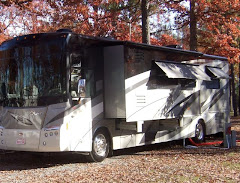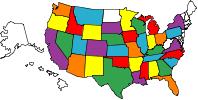
Blessed with a break between morning and evening showers, we made a midday trip to the Madison River Canyon Earthquake Area. Along an 11-mile stretch of US Highway 287, we learned the story of what happened along these peaceful shores 50 years ago.
On the evening of August 19, 1959, the area just west of Yellowstone National Park experienced an 7.5 magnitude earthquake. At the time, it was the largest earthquake recorded in the United States. The property damage is still visible today. Here are the remains of one of two cabins along Hebgen Lake.
Although all of the surrounding structures were destroyed, this outhouse remained in one piece.
A woman in her 70s and her dog were sleeping in this cabin when the quake struck. The occupants survived, but the cabin ended up in rapidly rising Hebgen Lake.
A neighboring cabin is submerged several feet below the surface at this peaceful spot on Hebgen Lake.
The temblor caused a landslide of some 80 million tons of mountain onto a Forest Service campground below. The tumbling rock buried 19 campers alive and dammed the Madison River. The rapidly rising water killed another nine campers. The resulting lake was dubbed Earthquake Lake. More than 50 years later the evidence of that tragic night can be seen in the immense pile of rock at the far end of the new lake and the skeletal trees poking up on the lake surface.
In 1967 the US Forest Service opened a Visitor Center near the landslide. The building serves as an interpretive center about geology and the events of that fateful night and a memorial to its victims. The view from the Visitor Center is stunning, in an eerie sort of way.
On the other side of the debris pile, the Madison River and Highway 287 wind gently to the West.
As we emerged from Madison River Canyon, one of its current residents posed for a photo. We enjoyed a scenic drive through the valley back to Red Rock, arriving just in time for the showers to return on this last day of Spring.














No comments:
Post a Comment